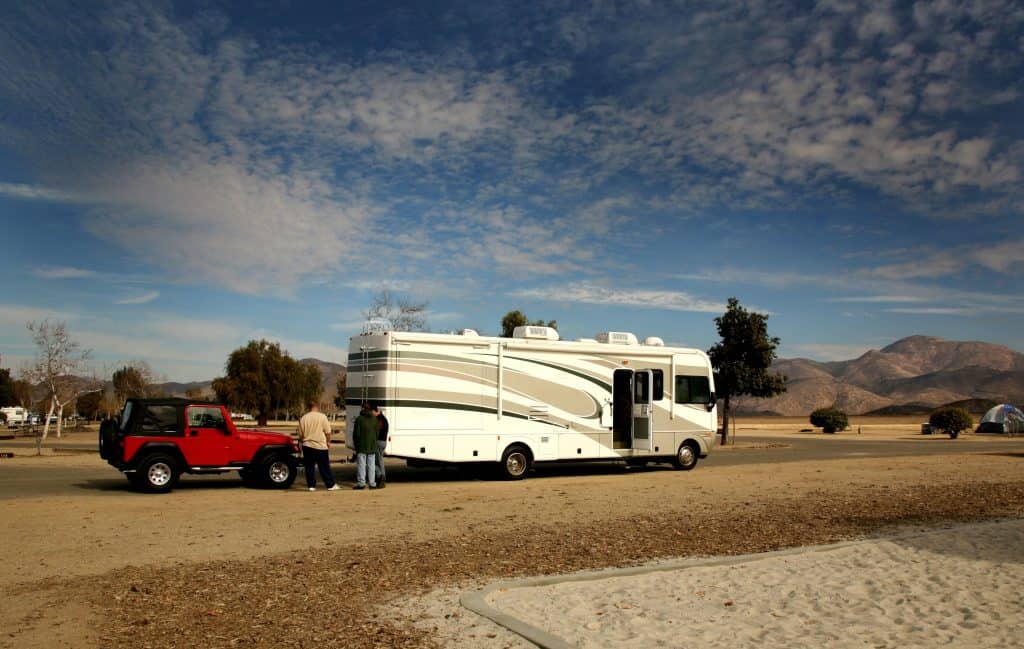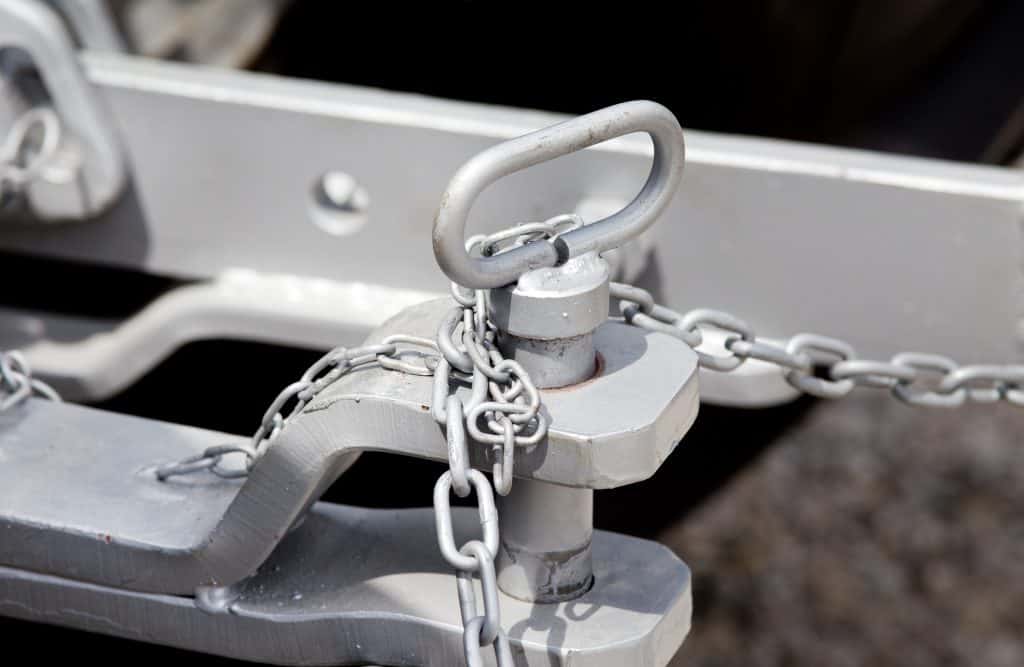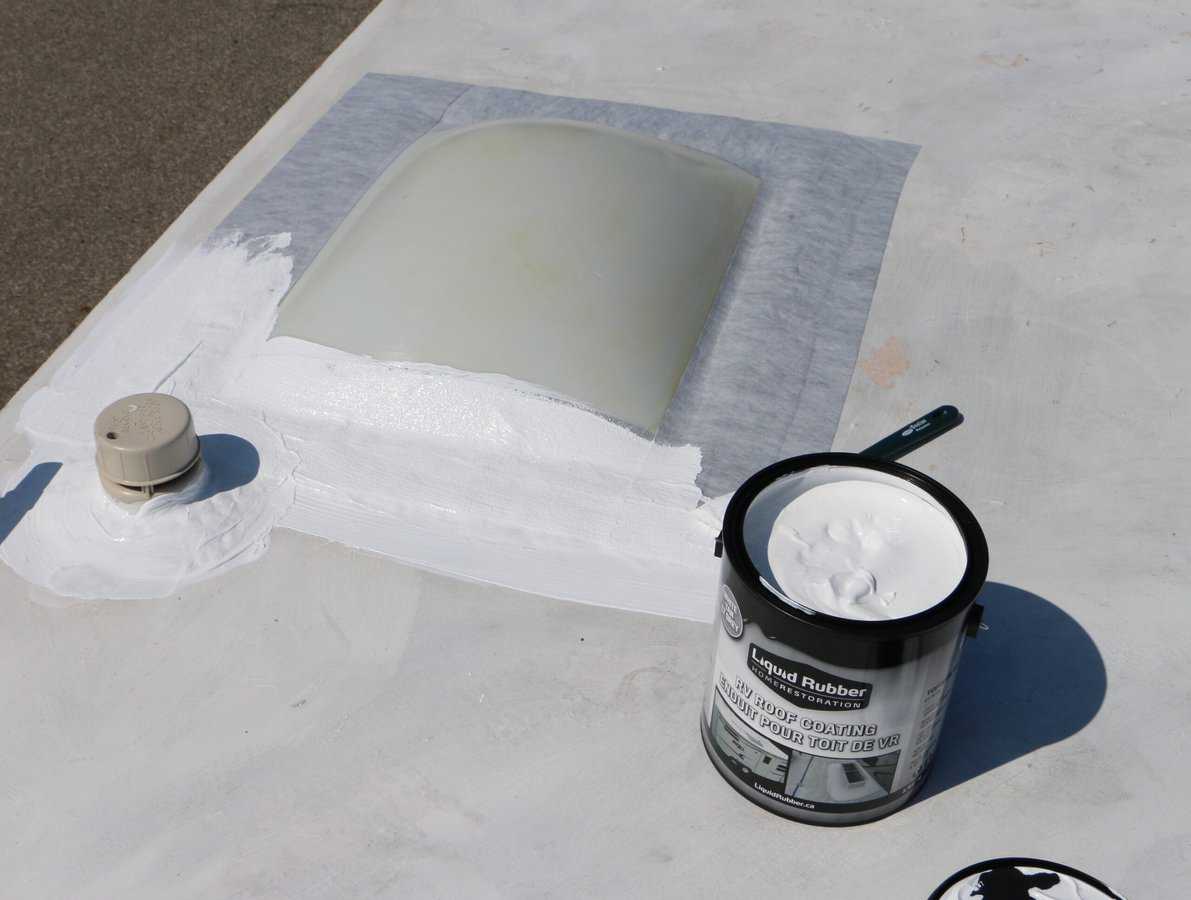
Whether you are a long-time RV owner or new to going camping in style, eventually you will run into the observation that it isn’t so easy to park in all those classic places like the grocery store or a public park. It can get a little cumbersome, but what if you towed a smaller vehicle?
Bringing a second vehicle is a great idea as it helps you get around town better and is more convenient. Some people even store extra goods that didn’t fit in the main cabin of their RV in it. However, it isn’t super well known that not every car you own can be towed behind an RV as well as others.
How do you know what vehicles work and what don’t? Don’t worry, this post will give you not only some suggestions on what cars you can tow behind your RV but also helpful tips and details about flat-towing to help improve the ease and safety of your vacation.
Typically, the rule of thumb for knowing what cars can be towed can be summed up in these few rules; checking the owners manual, rear-wheel drive capacities and manual transmission, a four-wheel drive and a manual transfer case that can be placed in Neutral. The automaker’s Jeeps and Ram pickups are generally good tow behind vehicles.
These few highlighted points are essential in identifying the ability to tow your car. If you can check the box that your vehicle matching these points, then you’re pretty much good to hit the road. Most cars can be towed behind an RV, just some of the methods change depending on the vehicle you own.
Jeeps and Ram pickups are usually the top picks for towing are because they are usually manual transmission and four-wheel drive. These make it simple and easy for you to hit the road.
These are just some general examples and tips of what you can look for before you start setting up your tow hitch, so we will be able to go into more detail about what will work for you.
We will also take a look at some easy resources to help you find not only the right vehicle to be towed but also how to safely install a flat towing job as a little bit of an added bonus. And just for added measure, we will also take a look at common “no-no’s” to make sure nothing goes amiss on your trailer adventures.
How to Know What Cars Can Be Flat Towed

The first thing you need to do is to check your owners manual on the vehicle you want to be towed. This is to make sure, first of all, it is legal and safe to do so for that car. Most states require and have certain limitations to what cars are suitable for tow capabilities.
Depending on the car’s transmission and driving capabilities (like 4 wheel drive) that will also affect its ability to handle being towed over any distance. If you don’t check the capabilities of your car, you could end up with fines and a ruined car.
It’s not your fault if your car isn’t able to be flat towed. It doesn’t mean you made a bad buy, you will just have to adjust the way you tow your car. Luckily there is more than one way to tow a vehicle. We will also touch a little bit on how to flat tow and the benefits of trying to flat tow your vehicle as opposed to other forms of towing.
However, because this is such a common need to know if your vehicle can be towed, almost every automaker in each model’s manual has a description on what works and what doesn’t for that specific model.
The three main kinds you will probably see listed are; can be towed on all four wheels or it must be hauled on a flatbed truck or trailer or pulled “two-down” with the driven wheels off the ground.
Another huge step to consider, even after you may find out if your car is able to be towed, make sure your RV can actually tow the weight of your car. Not all cars are the same and you have to take into account the weight the RV is already pulling with you and the things in your RV.
This can be done with a little bit of simple math. To start, subtract the fully loaded weight (passengers and cargo) of the RV its GCWR (gross combined weight rating).
Then weigh the dinghy (with full fuel) and check to make sure that it is less than the amount that you have to tow based on your above calculations. If you are using a dolly to tow, make sure to weigh the dinghy and the dolly together. If it ends up being too heavy you could ruin your transmission or worse.
Another weight concern to take into account for is how much the motorhome’s hitch receiver weighs. The good news is, that if it is too heavy you are able to change out or upgrade to one that will fit your needs instead of getting a whole new car.
But beware that these upgrades won’t always solve all your problems as your chassis can only take so much weight on its own (a lot less upgradable). The biggest take away from this post is to simply check the owners manual or ask the seller/ dealership more details about the vehicle.
This will help you narrow down options for cars to use and doesn’t take a long time to do, especially in comparison to buying or having your car, trying to get all the tools you need and realizing that your car wasn’t accurately suited to be flat towed.
How to Know if Your Car is Flat Towable
As we switch gears to talk about what cars that will work, we will talk about those general tips to know if your car is “flat towable.” Like mentioned above if it has rear-wheel drive and a manual transmission or four-wheel drive and a manual transfer case that can be placed in Neutral are good cars to tow.
Typically the automaker’s Jeeps and Ram pickups mentioned above are popular vehicles to be towed because they are already designed for off-road and tasks that require a lot of towing and special requirements. They are so much more than a “get around town” type of car. So, you will have the most luck with the ability to tow these vehicles if you own these.
Worst-case scenario, if after doing a little investigation on your car and you find that it isn’t suitable for flat towing, companies do make tools for you to adapt your car to be able to be flat towed like driveshaft decouplers and transmission lubrication pumps, which can be added to automatic transmissions.
A quick word of caution though is that these devices can be expensive and complicated to install and maintain. If used incorrectly or not installed properly, the engine or drivetrain components can be damaged while a vehicle is being towed even affecting the warranties on your vehicles.
You can find a lot of these parts at dealerships for your vehicle that may even be a cheaper option to convert your vehicle over. They also will give you more accurate or specific information on your car to help you make sure that you will be safe and towing accurately.
Be aware as well, that if your car isn’t even legally able to be towed behind an RV as stated in the owners manual, then you will need to look into other options. This is not only to preserve the life of your car, but also to ensure the safety of other drivers on the road while you are in motion. The best vacations are fun-filled and safety-oriented.
If you haven’t purchased a car yet, the best and simplest option would be to find those vehicles that are factory ready to hit the road behind your RV. It makes it a lot simpler. It may not be cheaper than getting a low cost automatic but can save you a lot of headache in the long run.
Another note here is to make sure that you check each model of the car you want to tow. Last years to this years model may differ in what can be towed and what cannot be. The cars listed below are generic types of cars that have been known to be able to be towed. The biggest rule of thumb is to trust the official owner’s manuals of the car that you have.
Now to look at some specific car examples to narrow down the guesswork on what vehicles work. The ones listed below are popular and common vehicles that work with flat towing. There are a lot of other cars that can be flat towed besides the ones listed here.
| Vehicle | Drivetrain | Transmission | Curb Weight (lbs) |
|---|---|---|---|
| Jeep Wrangler Unlimited | 4WD | 6-speed manual transmission or 8-speed Torqueflite 850REautomatic transmission | 3,970-4,439 |
| JK Jeep Wrangler | Manual or Automatic | 5- speed automatic or 6- speed manual | 3,879-4,132 |
| 2017 Jeep Wrangler Rubicon Hard Rock Edition | 4WD | 6- speed Manual | 6,282 |
| 2019 Jeep Cherokee Trailhawk | 4WD | 9-Speed 948Te Auto W/Active Drive Ii (Standard) | 4,250 |
| Ford F-150 | 4WD | Electronic 6-Speed Automatic (Standard) or Electronic 10-Speed Automatic | 4,069- 5,697 |
| 2019 Ram 1500 | 4WD | 8 speed- automatic w/OD | 5,232 |
| 2019 Chevy Colorado | 4WD | 8 speed- shiftable automatic | 4,479 |
| Fiat 500 | Front-Wheel Drive | 5- speed manual | 2,505 |
| 2016 FIAT 500 Abarth | Front-Wheel Drive | 5- speed manual | 2,512 |
| 2016 Chevrolet Spark | Front-Wheel Drive | 5- speed Manual | 2,246- 2,312 |
| 2019 Chevrolet Malibu | Front-Wheel Drive | 9- speed automatic transmission | 3,223 |
| 2016 Ford Fusion Hybrid | Front-Wheel Drive | Continuously variable-speed automatic (hybrid engine | 3,615 |
| 1994 Toyota Pickup | 2WD | 5- speed Manual | 3,880 |
| 2012 Chevrolet Sonic | Front-Wheel Drive | 6- speed automatic | 2,690- 2,806 |
| 2012 Honda CR-V | FWD, 4WD | 5-speed automatic | 3,305- 3,529 |
As you can see, there are a lot of different automakers and car types that can be flat towed. Keep in mind these are also general specifications you will see, it is still a very strong recommendation to check your vehicle’s specific details about towing. Sometimes, the year of the same model of car can affect the ability to be flat towed.
You will also find some models in the Scion brand (which is an offshoot of Toyota) that are suitable for dinghy towing. Just remember to check for owners manuals or call the associated dealerships. For foreign-made cars, that may also be a factor in the towing ability of the vehicle.
It may surprise you to see some of these different vehicles on the above list because they may not be considered off-road or camping vehicles, but as long as your vehicle meets the requirements and states in the owners manual that it is safe, you’re good to go.
There is a website where you can specifically find cars that can be towed or even to find the vehicles that meet the qualifications to be flat towed. It’s also very resourceful if you lose your owners manual (or just don’t know what cars will work for your needs). If you check out Edmunds.com you will be able to find something for your adventuring needs.
Even though Edmunds also has all the specs you could possibly want, they also do sell new and used vehicles, so if you are looking for a towable car, this is definitely the right place for you to go to get started.
Remember: flat towing is a two-part deal. You must 1 have an RV that has the capacity to pull a second vehicle on top of cargo load on the RV, and 2 find the right car that has the transmission capacities and ability to be towed. When those two stars align you’re in good shape to start your adventuring.
Basics of Flat Towing & What You Will Need to Get Started
After knowing what cars would work for you to use, it still may be good to learn the basics of flat-towing if you don’t know already, especially if you are a first time or newer RV owner.
To start off there are a few pointers and tips to know the basics of flat towing and how to keep it safe and legal. You will need to have a trailer hit component on your RV for this to work but check out this video below to get familiar with the basics. (By the way, if you hear the phrase “dinghy towing” it means the same as flat towing).
You’ll see that this process of flat towing is a really customizable and unique process, it is easier to maintain than other towing, but one needs to be informed before just buying a tow bar and hitting the road.
Flat towing is a little bit different than some other towing options than you might guess, especially with commercial cars or even just towing a trailer on a car. It takes a little more than a simple hitch and maybe a few safety chains.
To tow a car behind something as massive as a motorhome, you will need to to have the right tools to keep you and your vehicle from sliding off the road. It is always a good idea to have back up safety chains to ensure no runaway vehicles.
Besides these tools and safety features (check and see what your state and the state you may be traveling to requires for safe towing) there is a core system that you will need. That is a flat towing bar. Because of the free market and the ingenuity of mankind, there are several kinds of tow bars you can get.
The first layer of bars that you can get are either RV mounts or vehicle mounts. From there we will be focusing on vehicle mounts. They don’t use hitches and have the following qualities about them.
There are two main types of bars that you can use to flat tow your car: self-aligning tow bars and A-frame bars. Within each of these two ways of towing self-aligning has dingy or coach mounting systems whereas A-frame has folding or solid types. Depending on which you choose they each have their own pros and cons.
Self-aligning bars are able to adjust for user error, expand and contract to the movement of the Motorhome and are arguably the safer option. Especially if you aren’t a pro at hooking up vehicles or just want to be safe with the calculations. They are a little bit more user-friendly as they only require one main rig to set up and start using it.
A-frame bars are a little bit stiffer and require a receiver mounted under the frame of the car. It is a really solid, welded frame that will stay in the same position for the entire journey and won’t adjust to fit your vehicle.
It does take two people to tango with this rig, but a general plus with A-frame bars is that they are pretty simple in design and are extremely light and economically are the cheaper option. Especially if you are only towing a couple of times a year, it fits well with the amount of drive time and use.
Pro Tips And Cautions

There are a few more dynamics that you would need to take into consideration when towing. After you are all hooked up ready to go, even though the car that is being towed isn’t on, the components in the car are working like it is.
The tires and gears are moving to keep the vehicle with lower resistance to the car pulling, causing the transmission to function differently. This means that as you are traveling you will need to circulate the transmission fluid to help your vehicle while it is being pulled.
The suggestion for when you need to circulate the transmission is 200 miles. Depending on the car it may go a bit longer or shorter. Your best friend becomes the owners manual in this case once again for specific information on your vehicle.
Without proper lubrication for the transmission, you could be facing a few more headaches on your trip than you may anticipate. If you can keep all the moving parts well taken care of you will have a smooth ride.
“With automatic transmissions and pump-dependent manuals, the output shaft isn’t being lubricated unless the vehicle’s engine is running, and a car can suffer severe transmission damage if it is towed with the driven wheels rolling along the highway, turning the driveshaft or, in the case of front-wheel-drive cars, the half shafts.”
Edmunds.com
With the car and the towing bar all picked out and set up, one might think that is all that needs to be done. Well, those are the main points that definitely are essential. However, due to local laws and safety regulations, you’ll need a few more things.
Nothing too flashy, well, maybe a little. You will need to set up your brake light system for the back of those cars and RV. First off, It is pretty simple to get your lights up and going. You can do it in a few different ways. The obvious one is having a professional come and install it for you.
That is if you do a permanent light system. Nonpermanent and wireless light systems are a great alternative that you can do on your own as they don’t take much time to set up as they don’t require installation and are easy to use.
However, if you will be towing your car quite often, then a permanent light system would be beneficial as you wouldn’t have to set up and take down the light system every few weeks–depending on how much you travel. If you are into looks, a permanent option actually provides a nice smooth finish to your car and doesn’t look like a weird attachment.
Besides lights, there are two more safety features to look into and one of them is required by a lot of states. These safety features are the braking system (required by most states) and tire pressure monitors.
Braking System
In fact, 43 out of the 50 United States require you to have auxiliary brake systems that work in tandem with the motorhomes. You can buy kits that will you allow you to be safe and legal on the roads. Nothing could be more preventable for a ticket.
The braking system is what clearly helps both your RV and the tow vehicle slow down in a safe and effective way. Without it, you could probably find a large number of crash videos on the internet. This system allows for unity between both vehicles and can even help with slowing down in an emergency or around town.
Again with a brake system, you can have a permanent and non-permanent solution to how you want to go about making sure your tow vehicle is in sync with the RV. You could have someone install both kinds, but some break systems that have been developed don’t require intense installation or a distracting amount of monitors on your dash.
Tire Pressure Monitors
The tire pressure sensors are a great resource to help you keep an eye on things as you travel. Nothing is worse than a flat tire, and what is even worse is having a flat tire you may not even realize happened. Having sensors makes sure you prevent problems before they get too serious on your tip.
Last, but not least here are is some food for thought as that little voice in the back of your head is telling you that you forgot something, chances are it could be some of these things.
- The need to change or removed fuses before going on your trip. Some cars need to be loosed up a bit and be ready to be able to yield to a towing vehicle.
- Some cars also require certain settings and positions (like “park” or “neutral”) while you are out on the road so no gears lock up and so you can rest easy when driving your car.
- Look into your transfer cases as they may need to be in a different position in “tow mode.”
- Locked steering while driving is also a huge concern. You’d hate to take a left and your car skids around you. Sometimes all it takes is some time before you leave to unlock that setting on your car. It’s a good feature, but just not when you’re towing. Check the owners manual for more details about how to do that for your own car. (It’s pretty essential that a locked steering wheel doesn’t happen.)
- When you are towing, it can drain your car battery faster and wear on the brakes that you have installed.
How to Flat Tow Your Vehicle
In case you aren’t sure how to install towbar, here is a useful video that can help you with an adjustable style of towbar. Just ten minutes of a simple tutorial if you want to save some time in setting up the night before. If you have a different type of towbar you are interested in installing, there are many options and resources out there to help you!
Another good note is to inform your insurance company that you have had a towbar fitted to your vehicle. By doing this you help protect your current policies to stay valid.




Has anyone told a 2021 Kia soul six speed manual? The owners manual does not say it is/ is not flat towable.
Can a 1986 GMC C-10 pickup with a TH350C automatic Transmission be flat towed behind a RV
I have a 2014 Cadillac SRX FWD that I want to flat tow. The owner’s manual states that I can. I can’t get the dealer to say yea or nay. I called Cadillac in Detroit and they say ask the dealer. I don’t know what to do.
Can you flat tow a 2019 Buick envision premium ii with a 9 speed transmission and 2.0 turbo
Looking for a sedan that can be flat towed, the 2019 Chevrolet Malibu you say is, is not. The manual said it is but the manufacturer change that due to many problems.
I have towed a Dodge Intrepid with tow dolly for many years and would like to change to flat towed. I like the Malibu and would like a similar car, do you have any suggestions?